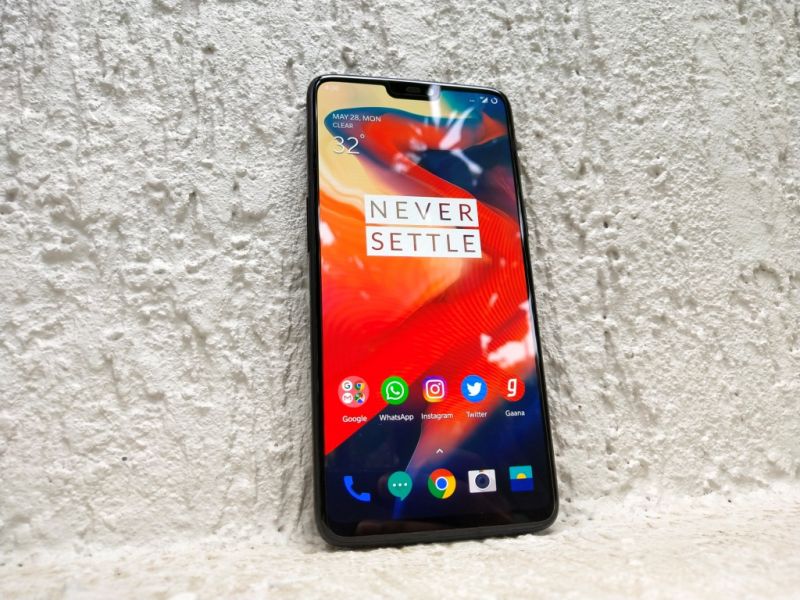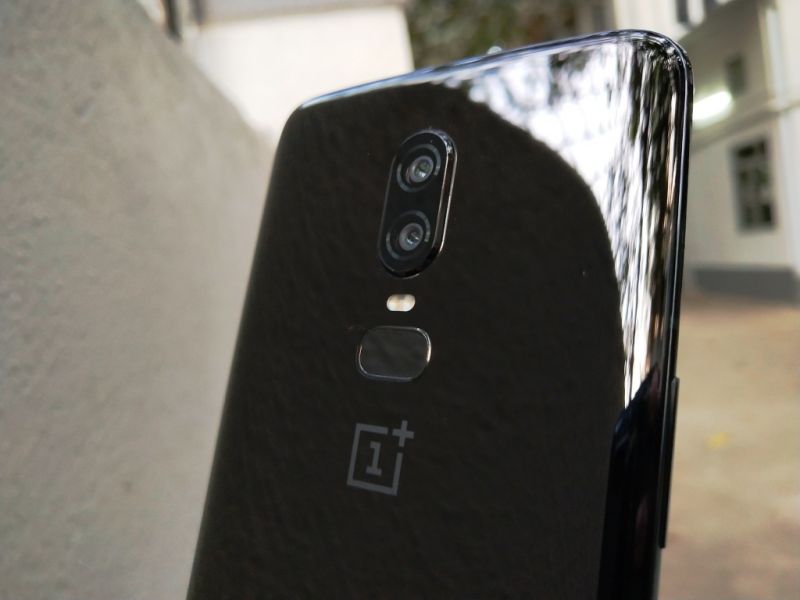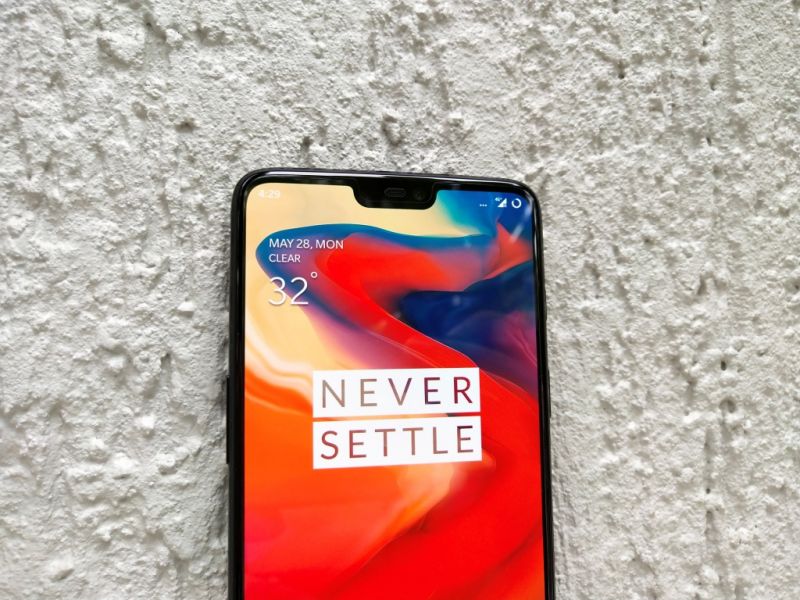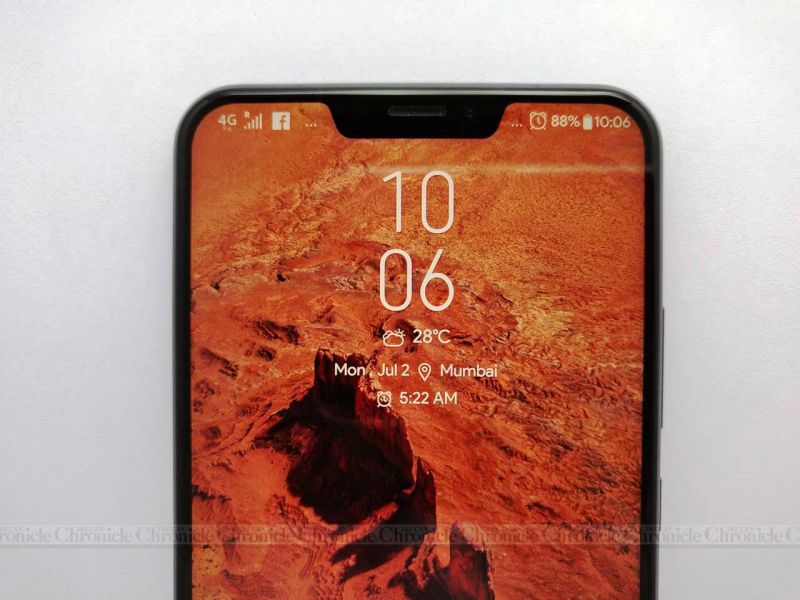OnePlus 6 vs ASUS Zenfone 5z: Battle of the 845 dragons
The affordable flagship category now has two equally capable yet completely different smartphones on offer.
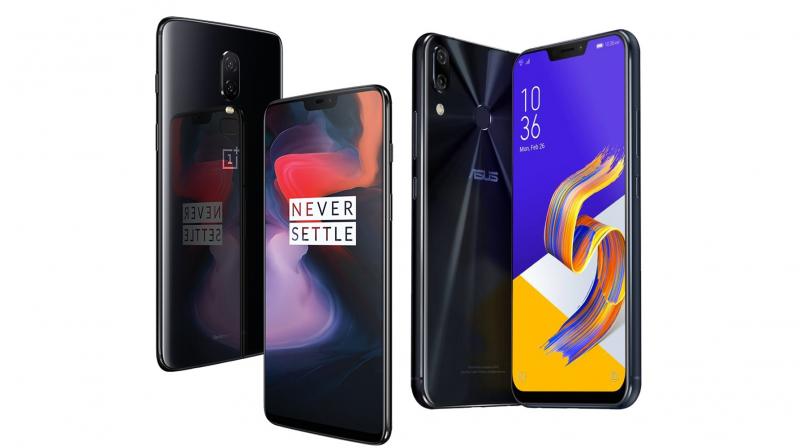
The affordable smartphone in the flagship category has been seeing an intense amount of competition in recent times. Initially dominated by OnePlus and Xiaomi, this space is now entertaining more entrants from older players such as Huawei, Nokia and ASUS. For 2018, OnePlus revamped its offering again with the OnePlus 6 (OP6), making it one of the first smartphones on India to offer Qualcomm’s Snapdragon 845 chipset. Paired along with highly capable cameras and a modern design, the OnePlus 6 is a great value, especially when you consider its starting price of Rs 34,999.
While Xiaomi and OnePlus have been playing the 'affordable' game, Huawei and ASUS seem to creep up the collars of the two players to grab a share of their pie. With the Honor 10, Huawei played its cards well to being in a chic-looking flagship against the OnePlus 6.
Also read: OnePlus 6 review
And now, ASUS seems to be gaining potential, slowly showing their prowess against Xiaomi and OnePlus. We saw them grab Xiaomi's pie with the Zenfone Max Pro M1, and now they are all out to grab the bull (OnePlus) by its horns with the Zenfone 5z.
Their flagship for the year (at least until the ROG gets here) is also equipped with a Snapdragon 845 chip, making it the only second brand to get the 845 dragon into India. This SoC, paired with up to 8GB of RAM and up to 256GB of storage, makes it eligible to now grab the same bull by its tail, and that too with jaw-dropping prices. The Zenfone 5z surely wins the 'affordable' title with respect to the price it demands.
Moving on, the 5z focuses extremely on AI and manages to put a good show in the optics department. Starting at Rs 29,999, it undercuts the OP6 by a considerable margin — a savings of almost 5,000 to 10,000, depending on which variant you choose.
Also read: ASUS Zenfone 5z review
If you are out for a premium smartphone, these two options do pose a great dilemma. Therefore, we put both of them on the stage for you to see which one fares better.
Aesthetics, Build:
Both the smartphones have adorned modern glass-metal build, featuring Gorilla Glass protection on both ends. Both of them feature a 6.2-inch display with a notch on their forehead. However, the Zenfone 5z has a better and more compact form factor in comparison to the OnePlus 6, which is a tad wider. Therefore, it’s easier to carry around the Zenfone 5z in the real world, owing to its slimmer shape and thus a better grip.
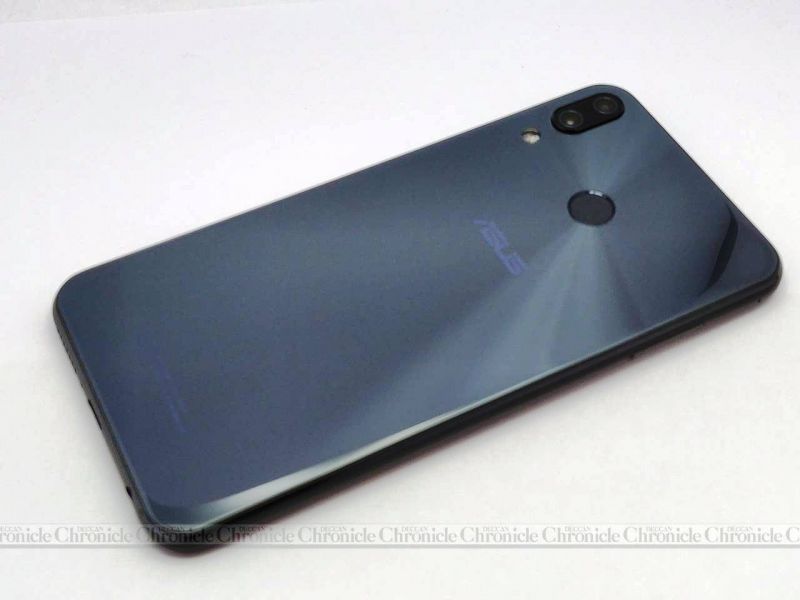
On the other hand, the OnePlus gains a slightly better edge in the aesthetics department. The OP6 comes is definitely elegant-looking, which sports a subtly curved rear panel. The design surely commands attention, despite sporting a large narrow-bezel notched display.

The Zenfone 5z could be addressed as 'comparatively loud' — thanks to the signature concentric circle design that essentially appeals to a kind of consumers who like to make a statement while in the wild. In short, it sports a more formal look, along with a rear design that echoes Apple’s iPhone X. However, the design feels slightly dated when compared to the more rounded OnePlus 6.
Display:
As stated, both the smartphones sport a similar sized 6.2-inch display. However, the OnePlus 6 relies on an Optic AMOLED panel, whereas the Zenfone 5z sports an IPS LCD. The AMOLED panel technology allows for a narrower chin, while the Zenfone 5z has to make do with a slightly larger chin to accommodate display chips for the LCD.
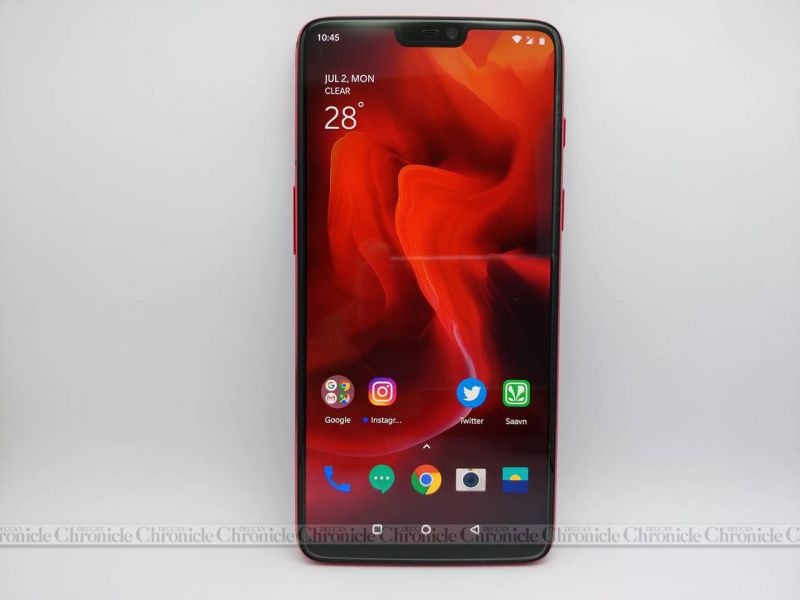
When it comes to picture quality though, both of them can exchange fire. The OnePlus 6’s AMOLED display renders inky blacks with vibrant colours and contrasts. The viewing angles are wide, but AMOLED panels don't manage to provide adequate sunlight legibility.
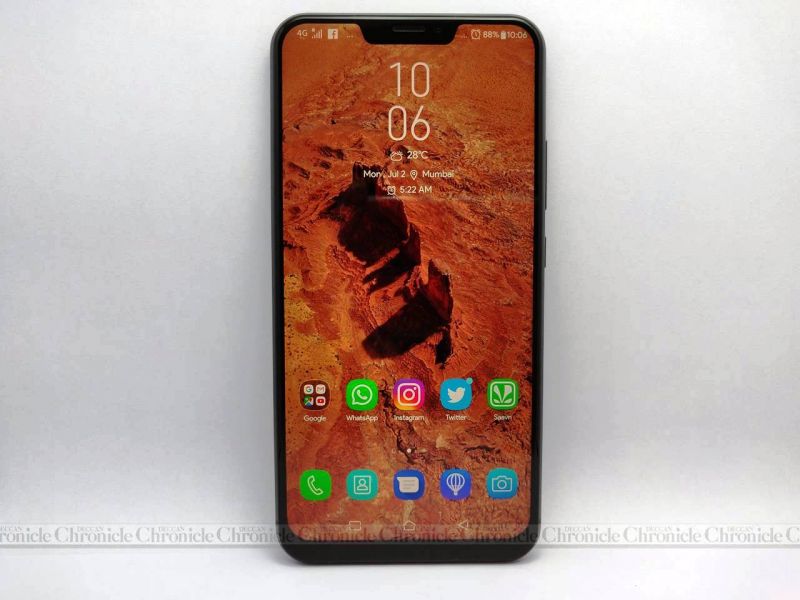
This is where the Zenfone 5z’s LCD panel shines out, delivering an equal amount of legibility in most conditions. ASUS has tweaked it impressively to render punchy colours and vibrant contrasts. With the help of AI, ASUS has also baked-in additional features such as auto colour temperature and Smart Screen On feature to enhance the user's viewing experience.
Performance:
Both the flagships can easily be termed as 'absolute beasts' when it comes to performance. No matter however you spec them, both feature a Qualcomm Snapdragon 845 chip paired with up to 8GB of RAM and 256GB of onboard storage. However, while the OP is limited to the storage you buy, the Zenfone offers a hybrid SIM slot with allowance for storage expansion of up to 512GB, which is a great value-add for a consumer.
Both phones also run their own customised versions of Android Oreo. However, the difference lies in the approach of the UI — OnePlus’ Oxygen OS is pretty close to a no-gimmick and near-stock Android whereas ASUS’ ZenUI tries to reimagine how an Android phone’s interface could be (better).
As we have stated in our review, the Oxygen OS on OnePlus 6 is possibly one of the best custom iterations of Android we have ever seen. Developers at OnePlus do invest a lot of time to ensure a swift UI without losing any its minimalist appeal. Also, bloatware is almost negligible.
ZenUI, on the other hand, brings all the gimmicks to make for a unique experience which users usually prefer to have. ASUS has baked in an artificial intelligence (AI) into almost every nook and cranny of the ZenUI, thereby making it an OS that is easy-to-use for a consumer on a day-to-day basis. However, the UI's aesthetics may not be as appealing to a few. The many smartphone users we know have a mixed-reaction towards user interfaces — while some prefer stock, others loved the customisable options offered by the UI. So those who do not like cluttered interfaces, preferred the OP approach, while some of us acknowledged the additional customisations as 'useful'.
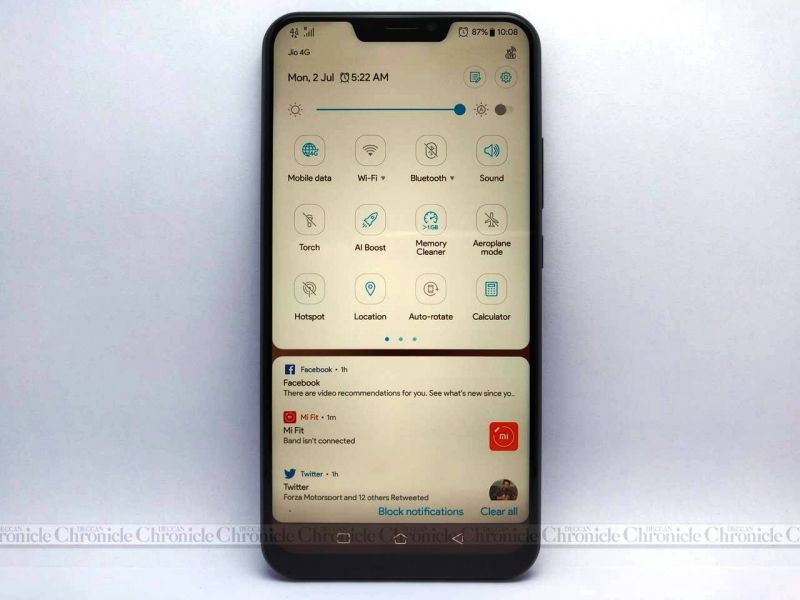
Despite the differences, both the smartphones are definitely lightning fast — thanks to the SD845 + 6/8GB RAM. Whether you are throwing multiple apps together or switching between resource intensive gaming titles, you can expect effortless performance, without any of them breaking into a sweat. Synthetic benchmarks reveal that the OP6 takes higher ground over the Zenfone 5z — thanks to the much lighter Oxygen OS. Antutu kept throwing an average score of 281,000 on the OnePlus 6, which is slightly higher than the Zenfone 5z’s average score of 261,000. But these are synthetic scores after all and cannot compare to the actual real-world performance completely. However, in real-world scenarios, both the Zenfone 5z and the OP6 churn out almost identical performance to the naked eye. You can hardly tell the difference as to which one is faster than the other.
Audio:
Where the Zenfone 5z takes a substantial lead over the OnePlus 6 is the audio department — ASUS has equipped the 5z with a host of dedicated audio gear to keep audiophiles happy. The Zenfone 5z features Hi-Res audio with 192kHz/24-bit standard with the help of Qualcomm's.' Audio CODEC and AudioWizard. The audio also boasts of DTS (Digital Theater System) Headphone:X 7.1 virtual surround sound for headphone support. Even when you are in no mood to plug in the headphones, the Zenfone 5z’s 5-magnet stereo speakers do a fairly decent job than the OP6’s single counterpart. On the other hand, the OnePlus 6 does not have anything to boast about here. Finally, both handsets provide AptX over Bluetooth for superior BT audio performance with compatible devices. An additional advantage that an ASUS phone provides is a bundled Hi-Res headset, where OnePlus does not bundle any headphones.
Biometrics:
The OnePlus 6 offers its now-renowned Face Unlock feature for the second time in a row after the OnePlus 5T. OnePlus has been known to have the fastest face unlocking mechanisms in the industry, which is undoubtedly true. The system works almost perfectly in most lighting conditions. Even when it goes dark, the assistive lighting helps to an extent to unlock the phone by using the display as a light source. It may not be as convenient as other face unlock systems relying on infrared sensors, but it does the job really well. In fact, you will seldom use the fingerprint sensor for unlocking the phone — fact.
The Zenfone 5z also features a similar software-assisted face unlocking system. However, unlike the OP6, the Zenfone 5z isn't as fast, even in regular lighting conditions. Sadly, when in darker environments, it completely fails. The display lighting is not present here, which could probably benefit the 5z users. Eventually, you end up using the fingerprint sensor almost every time.
Camera:
This is where things get interesting — both sport dual rear cameras. The OnePlus 6 has a 16MP+20MP sensor duo with a common f/1.7 aperture, while the Zenfone 5z flaunts a 12MP+8MP dual camera setup. The secondary camera on the OP aims for better low-light performance, while the rival uses it for wide-angle shots.
To the naked eye, the OnePlus 6’s results do have a slight edge over that of the Zenfone 5z’s. Pictures taken from the OP6 are pretty close to the natural tones, with adequate amounts of contrast and details. Low-light photos tend to contain a lot of light, with a minimal loss in details. Overall, shutterbugs would be happy with the OP6’s optics.
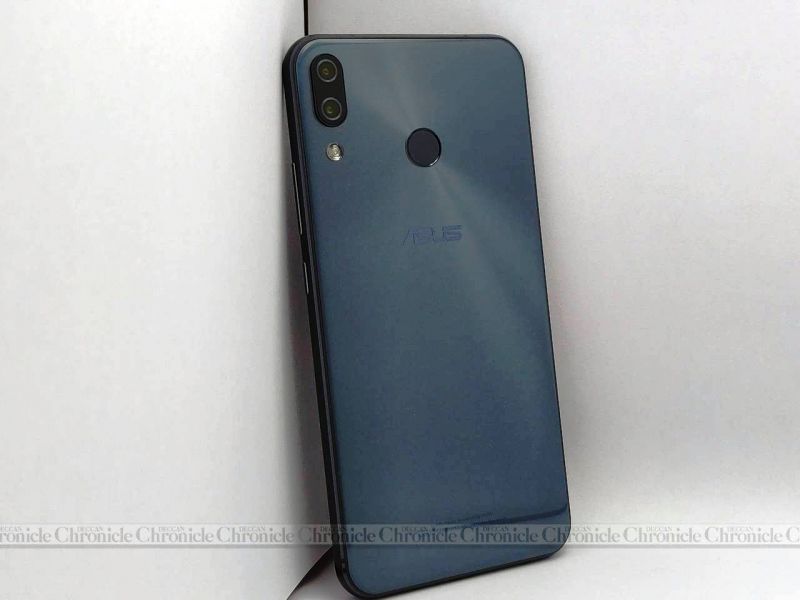
The Zenfone 5z relies heavily on AI to enhance the shots. Therefore, to make them look good (automatically), the AI algorithm kicks in to bump up the colours and the brightness in broad daylight. However, we did notice that once you get into the shade, photos tend to get overexposed and show a fair amount of noise too. Similar is the case, especially in low light. However, with manual mode, you take more control over the built-in AI to make your shots worthy. However, if you prefer (AI) enhancing the photos before perusal, then the 5z wouldn’t be a disappointment.
Battery:
Both OnePlus 6 and Zenfone 5z sport similar 3300mAh fuel tanks to keep them alive. ASUS and OnePlus have done a decent job in optimising the software for the hardware. In average daily usage, which usually involves texting, multiplayer games, photography and streaming music, both manage to last a whole day on just a single charge. However, OnePlus takes on the Zenfone where topping up the reservoir faster is concerned. OnePlus features its own Dash Charging technology (also known as Fast Charging) is blazingly faster than Quick Charging 3.0 on the Zenfone. Just half an hour of plugging in can allow you a whole's days use, but Zenfone does it in twice or more.
Miscellaneous:
The ASUS Zenfone 5z boasts of more over the rival, which states a boon for its consumer. Some features that ASUS has added in are FM Radio and triple microphone noise cancelling setup.
Conclusion:
After rummaging through all the pros and cons on both the handsets, it's evident that the two are pretty evenly matched in their own areas. They offer robust performance, decent cameras, great viewing experience and a day’s power even under moderate-to-heavy usage. However, both of them appeal to two different categories of consumers, with respect to features and style.
If split-second sheer performance is crucial for you, then the OnePlus 6 is the one. It will appeal to those who care about getting the best frame rates while playing resource-intensive gaming titles, or whilst multi-tasking through multiple apps for a more performance-oriented instrument. In short, the OP6 is highly aimed and recommended for geeks and enthusiasts.
The Zenfone 5z, on the other hand, is for those who don't want to put hard work into their own hands and seek ready-made smartphone experience out of the box. For those who seek a feature-rich premium smartphone, the 5Z is your bet. It has loads of customisations options and features to keep you happy. And, with an extremely competitive price that undercuts the OP6 big time, it comes across as a better value. The 5z is more of an all-rounder as compared to geek-oriented OnePlus 6.
Since both OP6 and 5z come with their own benefits and drawbacks, it is very difficult to recommend one over the other. While the 5z has a huge advantage of price, the OP6 has clean performance on offer.
We leave you to do the math. Which one would you prefer?
Click on Deccan Chronicle Technology and Science for the latest news and reviews. Follow us on Facebook, Twitter.

